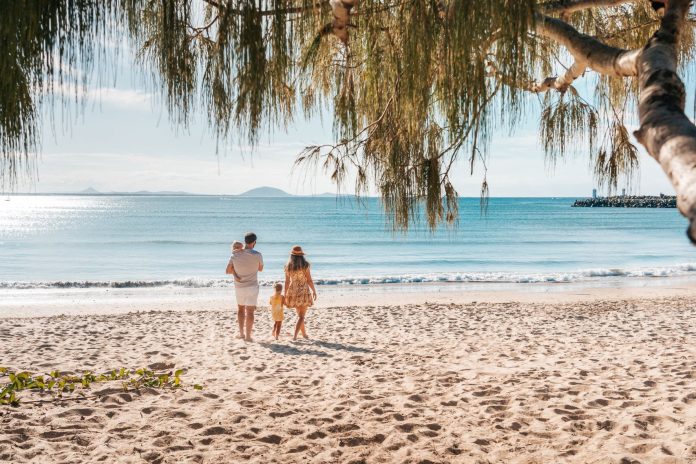The health of the Sunshine Coast’s beaches has been unveiled in a regional-first report card.
The state of the region’s beaches, headlands, lower estuaries and coastal lagoons was put under the microscope as part of the inaugural Coastal Health Report.
All beaches were rated fair to excellent, headlands and lower estuaries were rated good to excellent, while lagoons were ranked good.
The report was the culmination of years of monitoring and analysis, in a joint project involving Sunshine Coast Council and the University of the Sunshine Coast, with input from Healthy Land and Water.
It will provide a baseline for the long-term monitoring of the coast as part of the Environment & Liveability Strategy target to maintain and improve the health of the coast to good or excellent grade by 2041.
Lower estuaries including Maroochy River and Mooloolah River were the healthiest type of coastal ecosystem overall, with excellent grades for water quality and public benefits and a fair grade for biodiversity.
Meanwhile, the region’s headlands, such as Caloundra Headland and Moffat Headland, scored highest for biodiversity, with their array of plants and wildlife.
Sunshine Coast Councillor Maria Suarez said the monitoring program and report was a “starting line” towards improving the health of the coastal ecosystems and their benefits to the community.

“Our coastal areas are central to our region’s character, community and economy, as well as the survival of many endangered and vulnerable species that call them home,” she said via a council media release.
“This research and monitoring will help guide our decisions and highlight the areas where we can take steps to improve the health of our coastline and helps keep our community informed on the state of their local areas.”
Individual report cards for every beach, headland, lower estuary and coastal lagoon in the study area are available through an easy-to-use mapping tool on Council’s Environment and Liveability Strategy website, along with the full report.
Councillor Peter Cox said the report card format ensured the community could easily access, understand and share the findings.
“I encourage everyone to explore council’s interactive map to see their local report card,” he said.
“In our Sunshine Coast Biosphere we all enjoy these beautiful places and have a role in keeping them healthy; this starts with everyone understanding their current state.
“As a community we can celebrate our precious coastal areas and improve upon these benchmarks.”

UniSC Senior Lecturer in Animal Ecology Dr Ben Gilby said the program was the first of its kind in Australia and set the Sunshine Coast as a leader in monitoring and communicating scientific results for coastal ecosystems.
“Our beaches and waterways are the jewels in the Sunshine Coast’s crown,” he said.
“The strength of this program is its wide scope across all our coastal ecosystems; its focus on everything from the fish in the sea to the birds of the sky, and the physical processes that link them.
“The information is invaluable not only for coastal managers of the region, but also for residents and visitors interested in understanding more about their local environment.”
Dr Gilby also stressed the importance of the program for students at UniSC.
“It not only provides crucial information about the condition of our coastal ecosystems, but also supports significant opportunities for students, from undergraduate to PhD, to learn the skills they need for a successful career in environmental management.”
Cr Suarez said some beaches, including Mooloolaba and Maroochydore, were hotspots for community and visitor use and had been managed to meet those needs.
“By ensuring these areas of significant use continue to provide great public benefit, we position these as community and tourist hubs,” she said.
“Meanwhile, at our ecologically-focused beaches where we have positive dune buffer results like Coolum Beach and biodiversity results like Bokarina Beach, we want to maintain or enhance those to ensure a healthy environment and a haven for wildlife.
“This is just one of the strategies we use to balance the needs of people and nature as we continue to manage growth in our region while caring for our environment.”
Like stories that inform, connect and celebrate the Sunshine Coast? So do we. Join an independent local news revolution by subscribing to our FREE daily news feed at the bottom of this article.





